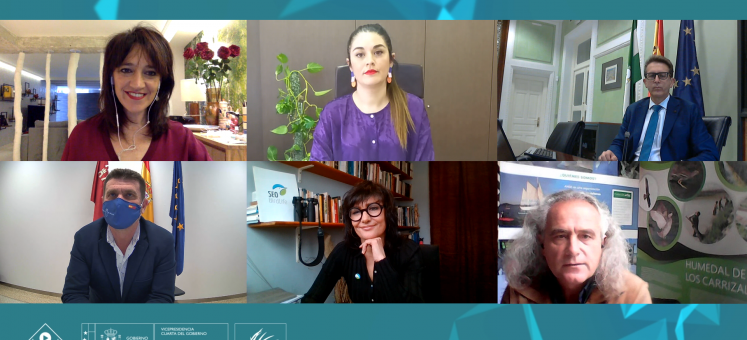Hugo Morán, the Secretary of State for the Environment has participated in the presentation of the LIFE Cerceta Pardilla project today. The objective of this initiative is to restore 3,000 hectares of wetlands to reverse the risk of extinction of the most threatened duck in Europe, which is in a critical situation in Spain.
Morán highlighted the importance of implementing urgent and coordinated measures in order to restore essential ecosystems in Spain, such as wetlands. His comments were made during the celebration of a new #Biodirectos, a series of online meetings organised by the Biodiversity Foundation of the Ministry for Ecological Transition and Demographic Challenge (MITECO).
This meeting was also held with the participation of all of the LIFE Marbled Duck partners. Consequently, Mireia Mollà, counsellor for Agriculture, Rural Development, Climatic Emergency and Ecological Transition of the Valencian Government, Francisco Gutiérrez, general secretary for the Environment, Water and Climate Change Ministry of the Andalusian Government, Fulgencio Perona, director general of the Ministry of the Environment of the Region of Murcia, Asunción Ruiz, executive director for SEO/BirdLife and Pedro García, director of ANSE, were all present.
The Secretary of State for the Environment stressed the importance of the “coordination between the Spanish State Administration, the Autonomous Regions, the scientific community, conservation entities and socioeconomic sectors to put into operation actions such as those planned in this LIFE project”.
A SPECIES AT CRITICAL RISK OF EXTINCTION
The marbled duck is one of the seven species listed as at critical risk of extinction in Spain. It was abundant in the Mediterranean coastal wetlands up until the middle of the twentieth century, especially in Doñana, but its drastic decline over the past few decades has placed it at imminent risk of extinction. Over the last few years, the central government has focussed its efforts on its recovery.
A total of 45 breeding pairs was censused in Spain last year, in virtually the only country where it breeds in Europe and with a clear tendency of decline. Its main threat is the loss and degradation of its habitat, leaving continued survival of the species at risk. The wetlands are suffering from the impacts of drought, pollution, the proliferation of artificial barriers and other threats deriving from human activities.
Over the next 5 years, the LIFE Marbled Duck project will undertake a series of actions to improve the state of the wetlands throughout the Spanish territory. These will be undertaken at sites belonging to the Community of Valencia, such as the Albufera de Valencia and the El Hondo Natural Park in Alicante, the Guadalquivir marshes in Andalucía and also in wetlands in Murcia, such as the Laguna de la Morera. All of these are wetlands pertaining to the Natura 2000 Network, the largest network of protected areas in the world and are ecosystems fundamental for the survival of the most threatened duck species in Europe.
Among the actions planned by the project is the acquisition of 141 hectares through the purchase of 3 estates located within areas considered as critical by the Marbled Duck Conservation Strategy, i.e. crucial sites for its survival and recovery. Monitoring actions are also planned, including involving the countries in the Maghreb region in order to better understand its movements and threats. In parallel, the species’ populations will be reinforced through a captive breeding and liberation program.
The project counts on the involvement of two specialist centres with proven success in captive breeding of the species: the Cañada de los Pájaros, in Andalucía, and the La Granja de El Saler Wildlife Recovery Centre, in the Community of Valencia. The captive breeding program will be based on the good practices developed in both these and other centres that may collaborate with the project.
These actions will be accompanied by others enabling a better understanding of the species via monitoring in the wild and through genetic studies. The project will foster the participation of other sectors relevant to its conservation, such as irrigated farming and hunting sectors, as well as awareness-raising and environmental education actions with the public.




